Expanding torch for Rio 2016 Olympic Games unveiled
Rio 2016: the 2016 Olympic torch by São Paulo studio Chelles & Hayashi has been revealed ahead of next year's games in Rio de Janeiro.
Chelles & Hayashi created the recycled aluminium torch for the Rio 2016 Olympic Games. The design expands vertically when it comes into contact with the flame to reveal a series of coloured resin sections.
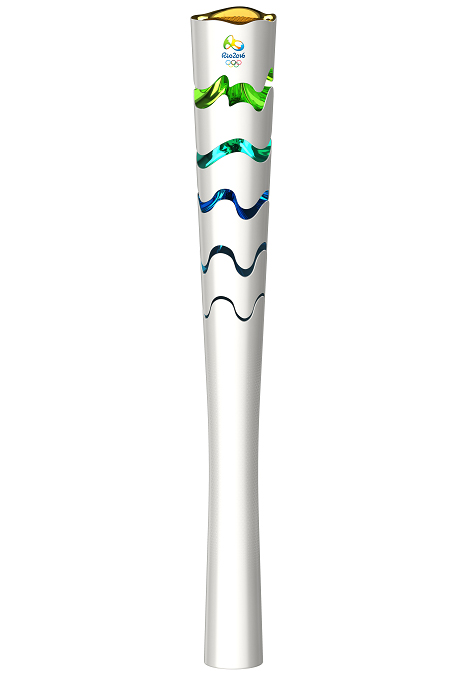
Presented during a ceremony in Brasília on Friday, the Olympic torch will be passed between 12,000 torchbearers, who will each run approximately 200 metres with one of the designs during a relay in the run up to the games.
When the flame is passed from one runner to another, in an action known as "the kiss of the torches", the sections towards the top of the baton will automatically open up.
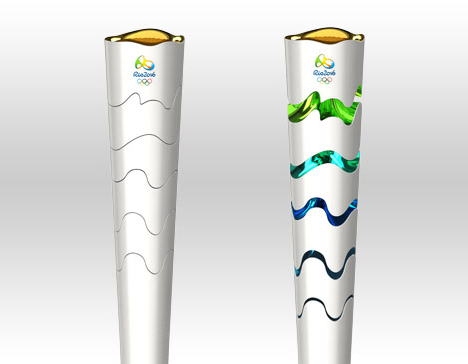
The blue and green resin sections revealed beneath, along with the yellow flame, are designed to represent the sea, mountains, sky and sun, and are also the hues found in the Brazilian flag.
The torch's triangular shape – similar to Barber and Osgerby's design for London 2012 – alludes to the three Olympic values of excellence, friendship and respect.
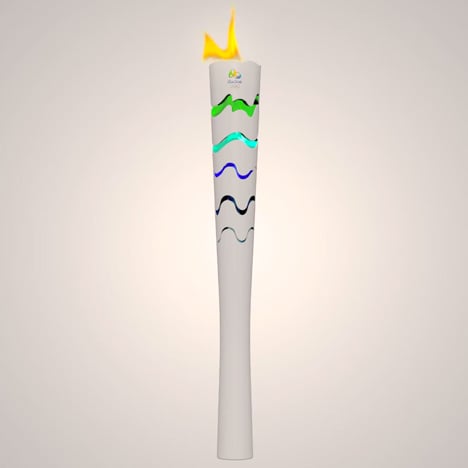
"The design of the Rio 2016 Torch was inspired by the Olympic spirit, our country's nature, and the harmonious diversity and energy of our people," said Rio 2016 brand director Beth Lula. "We used the specific stroke of the Rio 2016 brand to design the torch's contours.
Related content: see all our stories about the Rio 2016 Olympic Games
"Its horizontal segments, once open, reveal the sky, mountains, sea and the ground, represented by the promenade of Copacabana," she added.
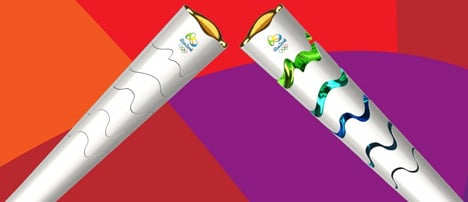
Each torch weighs between 1 and 1.5 kilograms, measuring 63.5 centimetres high when contracted and 69 centimetres when expanded.
Chelles & Hayashi – a relatively unknown studio that works with product, packaging and brand identity – was selected from a nationwide competition that included 76 agencies. The winning design was refined in collaboration with the Rio 2016 Organising Committee.
The torch will pass through 300 cities and towns on its 100-day journey across Brazil – the first South American country to host the games.
"We want to show the world the chemistry that we believe will be born when the Olympic Flame meets the warmth of the Brazilian people," said Nuzman. "Rio de Janeiro is working very hard to host the games, but these are all of Brazil's games and the whole population will take part."
The torch relay will conclude at the Olympic Stadium in Rio, designed by architects Carlos Porto and Gilson Santos. The stadium was completed in 2007, but closed temporarily in 2013 due to structural problems with its roof. The stadium sits within the wider AECOM-masterplanned Olympic park – a lagoon-side peninsula in the city's Barra da Tijuca district that includes 15 sports venues.
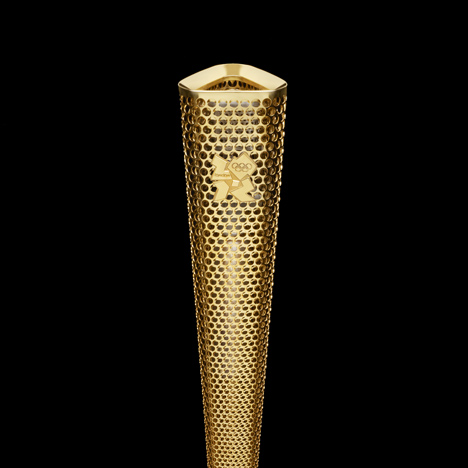
The tradition of the Olympic torch relay dates back to the 1936 Berlin games, and has been feature of each subsequent event. The flame is lit in Athens – where the games first originated – then flown to the host country before travelling around on a set route before lighting a cauldron during the opening ceremony, which burns for the duration of the tournament.
Rio 2016 Olympic Games will take place from 5 to 21 August.